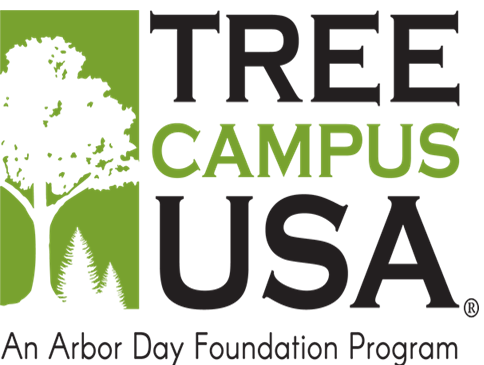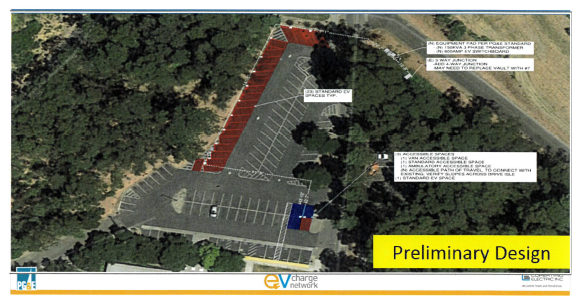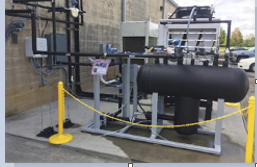The Energy and Sustainability team had planned an on-campus earth day event on April 23, 2020, however due to the Shelter-in-place order, this event is postponed to Fall 2020. This message provides a brief history of Earth Day, Cal Maritime sustainability initiatives which were planned for display during the Earth Day, and what we all can do to our good earth while complying with Shelter-in place directive, to mark the 50th anniversary of the Earth Day.
2020 marks the 50th anniversary of Earth Day. With shelter in place mandates in effect for the majority of the country, most Earth Day events are canceled. The good news is Earth Day will still be fully celebrated. Earth Day is now going digital to mobilize the world to take the most meaningful actions to make a difference. As individuals, we can still practice sustainability during the earth week, earth day and earth month and beyond. Every year on April 22, Earth Day marks the anniversary of the birth of the modern environmental movement in 1970. As we prepare to mark 50 years of Earth Day in 2020, let us look at the last half-century of mobilization for action:
Origins of Earth Day
Earth Day 1970 gave a voice to an emerging public consciousness about the state of our planet. In the decades leading up to the first Earth Day, Americans were consuming vast amounts of leaded gas through big and inefficient automobiles. Industry belched out smoke and sludge with little fear of the consequences. Air pollution was commonly accepted as the smell of prosperity. Until this point, mainstream America remained largely unaware of environmental concerns and how a polluted environment threatens human health.
However, the stage was set for change with the publication of Rachel Carson's New York Times bestseller Silent Spring in 1962. The book represented a watershed moment, selling more than 500,000 copies in 24 countries as it raised public awareness and concern for living organisms, the environment and the inextricable links between pollution and public health. Earth Day 1970 would come to provide a voice to this emerging environmental consciousness and place environmental concerns on the front page.
The Idea for the First Earth Day
Earth Day founder Gaylord Nelson came up with the idea for a national day to focus on the environment after Nelson, then a U.S. Senator from Wisconsin, witnessed the ravages of a massive oil spill in Santa Barbara, California, in 1969. Senator Nelson announced the idea for a "national teach-in on the environment" to the national media. He then persuaded Pete McCloskey, a conservation-minded Republican Congressman, to serve as his co-chair and recruited a 25-year-old named Denis Hayes from Harvard as national coordinator. Hayes built a national staff of 85 to promote events across the land. April 22, falling between Spring Break and Final Exams, was selected as the date.
On April 22, 1970, 20 million Americans — at the time, 10% of the total population
of the United States — took to the streets, parks and auditoriums to demonstrate for
a healthy, sustainable environment in massive coast-to-coast rallies. Thousands of
colleges and universities organized protests against the deterioration of the environment.
Groups that had been fighting individually against oil spills, polluting factories
and power plants, raw sewage, toxic dumps, pesticides, freeways, the loss of wilderness
and the extinction of wildlife united on Earth Day around these shared common values.
Earth Day 1970 achieved a rare political alignment, enlisting support from Republicans
and Democrats, rich and poor, urban dwellers and farmers, business and labor leaders.
By the end of 1970, the first Earth Day led to the creation of the United States Environmental
Protection Agency and the passage of the Clean Air, Clean Water and Endangered Species Acts.
1990: Earth Day Goes Global
As 1990 approached, a group of environmental leaders organized another major campaign for the planet. This time, Earth Day went global, mobilizing 200 million people in 141 countries and lifting environmental issues onto the world stage. Earth Day 1990 gave a huge boost to recycling efforts worldwide and helped pave the way for the 1992 United Nations Earth Summit in Rio de Janeiro.
Earth Day for a New Millenium
As the millennium approached, Hayes agreed to spearhead another campaign, this time focused on global warming and a push for clean energy. With 5,000 environmental groups in a record 184 countries reaching out to hundreds of millions of people, Earth Day 2000 built both global and local conversations, leveraging the power of the Internet to organize activists around the world, while also featuring a drum chain that traveled from village to village in Gabon, Africa. Hundreds of thousands of people also gathered on the National Mall in Washington, DC for a First Amendment Rally. 30 years on, Earth Day 2000 sent world leaders a loud and clear message: Citizens around the world wanted quick and decisive action on global warming and clean energy.
Earth Day Today
Today, Earth Day is widely recognized as the largest secular observance in the world, marked by more than a billion people every year as a day of action to change human behavior and provoke policy changes. Now, the fight for a clean environment continues with increasing urgency, as the ravages of climate change become more and more apparent every day.
As the awareness of our climate crisis grows, so does civil society mobilization,
which is reaching a fever pitch across the globe today. A fresh and frustrated generation
of young people are refusing to settle for platitudes, instead taking to the streets
by the millions to demand a new way forward. Digital and social media are bringing
these conversations, protests, strikes and mobilizations to a global audience, uniting
a concerned citizenry as never before and catalyzing generations to join together
to take on the greatest challenge that humankind has faced.
By tapping into some of the learnings, outcomes, and legacy of the first Earth Day
while also channeling the energy, excitement, and coordination of the youth climate
strikes, we can build a movement going into the 50th anniversary that goes to the
very heart of what EDN and Earth Day are all about — empowering individuals with the
information, the tools, the messaging and the communities needed to make an impact
and drive change.
What is Cal Maritime Doing in Energy & Sustainability?
Cal Maritime has a robust energy & sustainability program. Our goal is to implement CSU's systemwide sustainability policy into Cal Maritime's operation, curriculum, and community. To achieve the sustainability goals Cal Maritime employs no-cost, low-cost, and capital measures in its operations. Cal Maritime maximizes the use of incentives, grants, and other local government support programs to offset the use of general fund. One of the energy management goal is to completely off-grid the campus from the utility dependency through energy efficiency and renewable energy sources. To this end the campus is pursuing an Academic Smart Microgrid initiative consisting of multiple energy conservation and clean energy technologies making the campus a living lab for learning and working. The Federal Energy Regulatory Commission (FERC) has approved Cal Maritime's application to build a 10 MW Marine Hydrokinetic technology project at the campus waters.
Academically the campus offers ten sustainability courses, eight of them at the focus-level, and two at the inclusive-level. The names of the courses are Environmental Law, Environmental Ethics, Marine Biology, Environmental Policies, Ocean Environmental Management, Citizens Environmental Sciences, Polar Politics, Ocean Politics, Comparative Maritime Policies, and Energy Systems Design. In addition, the campus has an active Energy & Sustainability Committee consisting of faculty, staff, and students. Students are encouraged to take on energy, water, and other sustainability related projects for their class projects. Students and faculty take active role in campuses' Earth day, Arbor Day, Clean air day, e-waste day, and other sustainability events.
What Does Cal Maritime Have Planned for Earth Day?
Due to the Shelter-in-place, order Cal Maritime Earth Day that was planned for April 23 will be rescheduled in Fall semester of 2020. Following sustainability initiatives will be show cased.
1. Cal Maritime was recognized as the Tree Campus USA for the Year 2019: The Arbor Day Foundation recognized Cal Maritime as a 2019 Tree Campus USA. The Foundation
honors colleges and universities and their leaders for promoting healthy trees and
engaging students and staff in the spirit of conservation. To obtain this distinction,
California State University Maritime Academy s met the five core standards for sustainable
campus forestry required by Tree Campus USA, including establishment of a tree advisory
committee, evidence of a campus tree-care plan, dedicated annual expenditures for
its campus tree program, an Arbor Day observance and the sponsorship of student service-learning
projects.
The Arbor Day Foundation recognized Cal Maritime as a 2019 Tree Campus USA. The Foundation
honors colleges and universities and their leaders for promoting healthy trees and
engaging students and staff in the spirit of conservation. To obtain this distinction,
California State University Maritime Academy s met the five core standards for sustainable
campus forestry required by Tree Campus USA, including establishment of a tree advisory
committee, evidence of a campus tree-care plan, dedicated annual expenditures for
its campus tree program, an Arbor Day observance and the sponsorship of student service-learning
projects.
"Your entire campus community should be proud of this sustained commitment to environmental
stewardship" says Lauren Weyers, Program Coordinator, Arbor Day Foundation.
2. Electric Vehicle Charger Program:
Cal Maritime was approved by the PG&E's EV Charger Network Program to install 30 EV
chargers. The design and engineering work is completed and construction permits are
obtained. Ground breaking of the construction, initially scheduled for April of 2020,
is now moved to Fall 2020.

3. Electric Van: Cal Maritime purchased a ten seater electric van primarily funded by HVIP (Hybrid
and Electric Vehicle Incentive Program) and Bay Area Air Quality Management District
(BAAQMD). The van will be used for transporting students and faculty from Maritime
North Facility to classrooms, dining center, and off-campus essential shopping. The
van has a range of 120 miles and can charged in 3.5 hours from zero to full. The eVan
is expected to arrive in the middle of May 2020.
Cal Maritime purchased a ten seater electric van primarily funded by HVIP (Hybrid
and Electric Vehicle Incentive Program) and Bay Area Air Quality Management District
(BAAQMD). The van will be used for transporting students and faculty from Maritime
North Facility to classrooms, dining center, and off-campus essential shopping. The
van has a range of 120 miles and can charged in 3.5 hours from zero to full. The eVan
is expected to arrive in the middle of May 2020.
4. DC Fast Charger: The HVIP program also funded a DC fast charger to charge the electric van. This charger
will located at the Maritime North facility. The charger will specifically support
the electric van and other Cal Maritime electric vehicle.
The HVIP program also funded a DC fast charger to charge the electric van. This charger
will located at the Maritime North facility. The charger will specifically support
the electric van and other Cal Maritime electric vehicle.
5. Skycool Technology for Air-Conditioning the Classroom Building:
The objective of the project is to deploy and validate SkyCool Systems' breakthrough
radiative cooling panels in the classroom building on our Vallejo campus. The panels
will be integrated into a thermal storage system and used with indoor radiant panels
to cool six classrooms. The goal is to demonstrate greater than 50% energy savings
relative to the standard cooling solutions. This project will evaluate the technology's
commercial feasibility at the pilot scale. There is an opportunity for the Cal maritime
staff, faculty and students to get involved in research and data management of the
project. The design work is in process. Estimated completion date is September 2020.
6. Zero Global Warming Potential Cooling and Heating Demonstration Project:
With support from the California Energy Commission's Next Generation Heat Pump program,
the Electric Power Research Institute is developing a novel heat pump that uses ammonia
(NH3) as a refrigerant and carbon dioxide as a heat transfer fluid (CO2). This system
takes advantage of the superior properties of NH3 as a refrigerant to achieve high
efficiency, thus reducing operating costs. The thermophysical properties of sub-critical
and super-critical CO2 also allow lower installation costs, from reduced pipe sizing.
At the same time, both NH3 and CO2 have negligible global warming potential compared
to the refrigerants they replace, EPRI is partnering with Cal Maritime and others
to demonstrate this technology in the field, after testing and optimization of a lab
prototype. Cal Maritime staff and students will help EPRI to understand critical issues
in the field performance and operation and maintenance of these novel heat pumps.

7. Energy & Sustainability in Mayo Hall Remodeling:
Cal Maritime's Energy & Sustainability will partner with Planning, Design & Construction
team to incorporate cost saving and de-carbonization measures in the water, energy
and waste management areas.
8. Green Business Certification for Cal Maritime by Solano County:
Cal Maritime is in the process of being certified as a Green Business by the Solano
County's Green Business Certification Program. The County has surveyed the campus
and has determined that the ongoing energy and sustainability policy and measures
qualify Cal Maritime to be certified as Green Business.
9. Replanting of the Trees Lost in Glen Cove Fire (Revegetating of lost trees):
Our beautiful 90 acres campus is home to several species of native plants and trees
which we pride ourselves on maintaining and developing. The Cal Maritime Campus Tree
Management Plan and the Tree Advisory Council ensure that campus vegetation is managed
ethically and sustainably. For all of these efforts, Cal Maritime has been given the
honorable designation of Tree Campus USA by the Arbor Day Foundation for two consecutive
years.
On the afternoon of October 27, 2019 the Cal Maritime campus community was shocked
to find itself part of what would be dubbed the Glen Cove Fire. The fire occurred
when unusually heavy winds cause a nearby wildfire the leap over interstate 80, igniting
the east edge of campus. Thanks to the quick response from the Vallejo Fire Department
and other first responders — including Cal Maritime cadets and staff — damage to campus
was mitigated and contained to a small area. However, the campus did suffer a significant
loss in our tree population. Due to the effects of the fire, over 400 native trees
required removal from campus.
With sustainability in mind, and in an effort to be carbon neutral, we are planning
to not only replace our lost native tree population, but double it in size by planting
800 native California oak trees. The entire campus community will be involved in the
reforestation and with help from the Arbor Day Foundation; we can uphold the status
of Cal Maritime as a Tree Campus USA.
10. Marine Hydrokinetic Project:
Cal Maritime is seeking a license to develop a 5 MW pilot project or, alternatively,
an exemption for a 10 to 20 MW small hydro project capacity. The project will be located
in Cal Maritime waters and carried out in collaboration with the Coast Guard, Local
Utility Pacific Gas & Electric, Army Corps Engineers, local vendors, and neighboring
community as appropriate. The project will serve as a test bed to students and faculty
in various academic disciplines. Cal Maritime will primarily use the power produced
and the excess power will be shared with neighboring communities thus reducing the
carbon footprint in the region. This project will also help meet the growing power
need in the Mare Island development initiative by reducing the burden on local grid.
The Federal Energy Regulatory Commission (FERC) has approved Cal Maritime's application
to apply for a license to build the project. The approval is valid for four years.
What can you do from home during earth week/ earth day/earth month?
Here are a few easy ways individuals can celebrate Earth Day at home while social distancing:
- Stay home: Not driving will reduce your carbon footprint. We are already seeing this from the reports put out by BAAQMD. The air quality in the past few weeks has improved.
- Get educated: Discuss energy and sustainability issues with your family members. Turning Green Classroom offers 30 days of eco learning for students and families with simple, fun, impactful daily activities.
- Reduce energy use: Switch off lights and other electronic home equipment when not used. Set your thermostat to 68 Degrees in winter and 78 degrees in summer
- Reduce water use: Where possible use less water. Do not compromise on water when it comes to washing your hands to clean the germs.
- Beautify your yard. Grow your own vegetables and herbs. Eat plant-based meals. The carbon footprint of a vegetarian diet is about half that of a meat-lover's diet.
- Don't waste food: Food that decomposes in landfills releases methane. Reducing the amount of waste you produce will also benefit our garbage workers who are on the front lines. Commit to composting food scraps.
ABOUT CAL MARITIME
Established in 1929, California State University Maritime Academy is the only degree-granting
maritime academy on the West Coast. Located in Vallejo, California, the campus offers
undergraduate degrees that prepare students for careers in engineering, transportation,
international relations, business, and global logistics. Cal Maritime also offers
a master’s degree in Transportation and Engineering Management, as well as a number
of extended learning programs and courses.
